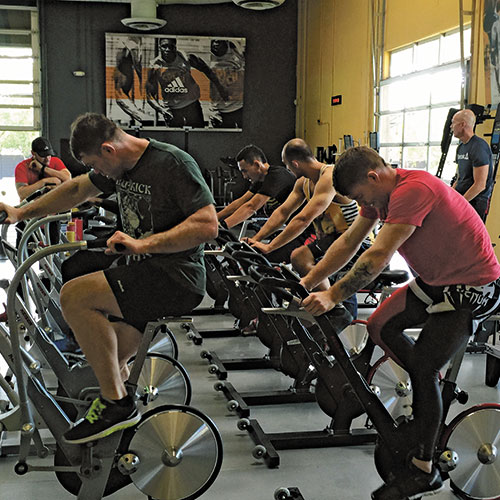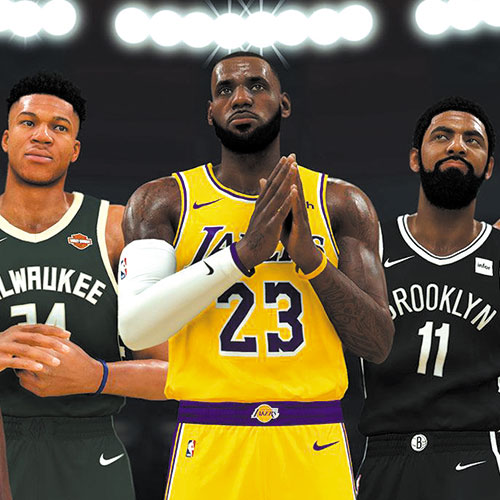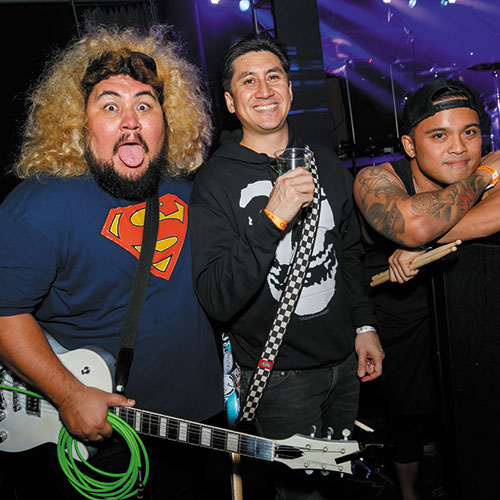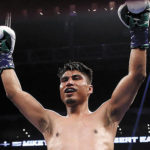UFC fighters get a lesson in training

By JOHN MARSHALL | AP Sports Writer
PHOENIX (AP) — Paul Felder finished a set of shoulder presses followed by squats with kettle bells and walked across the EXOS weight room, his chest heaving as he spoke to no one in particular.
“I thought this was supposed to be our light day,” said the UFC fighter known as The Irish Dragon.
UFC fighters are used to training hard, pushing through mental and physical roadblocks to become some of the best-conditioned athletes in the sports world. A week with EXOS pushed them out of their comfort zone.
EXOS partnered with the UFC last year and recently shuttled 70 fighters through its north Phoenix facility to train in groups. The fighters went through a crash course in mind-set, nutrition, movement and recovery that they can hopefully take back to implement in their own workouts.
“A week with us is not enough time to make significant changes, but it is enough time to give them some different opportunities and see different things, to open their eyes to a different approach to their training,” said John Stemmerman, EXOS vice president of performance and the lead trainer for the UFC sessions.
Founded in 1999 by Mark Verstegen, EXOS has become the go-to place for football players preparing for the NFL combine, with 595 draft picks and counting. The health and performance company, which has facilities in 10 states, has also worked with Major League Baseball teams, international and Major League Soccer teams, Olympians who have combined for 60 medals, along with military special ops and in the corporate workplace.
The goal of the partnership with UFC is to help the fighters reach peak physical condition, but also to prevent injuries, prolong careers and improve health after they’re done competing.
“We’re focused on their competitive career, the health, the safety, the performance, but also structuring things in a way that also is about taking care of players after their career,” said Verstegen, who also serves as the director of performance for the NFL Players Association and is an athletic coach for the German national soccer team. “It’s important while we have them engaged to truly have a much broader-term game plan of how we kind of view this health through performance.”
Working with UFC fighters is kind of like training a marathoner and sprinter at the same time.
UFC fighters need endurance to last up to five rounds in the octagon, but also have the anaerobic capacity to go all-out for short stretches of a fight. Fail to have both and the ability to finish off a fight diminishes.
Stemmerman likened it to needing three different types of car engines under one hood: A Prius for working long periods with minimal effort, NASCAR for moderate effort like grappling on the ground or against the cage and a dragster for all-out effort in short periods, like trying to finish off a knockout or submission.
“The conditioning piece is kind of where they make or break themselves in a lot of ways because if they don’t have the gas tank, they get gassed out too quickly,” Stemmerman said. “Fatigue puts them in a position where they can’t react to a punch, a strike, a takedown and/or they just get too fatigued that they can’t maintain themselves for three to five rounds.”
The workout sessions were typically broken up into two parts.
Mornings were mostly aerobic work and technique-based, longer duration-lower intensity moves where they reached 60 to 70 percent of their maximum heart rate while focusing on form. The afternoon is when it ramped up, focused on high power and high intensity in short periods of reaching 80 to 100 percent of their max heart rate.
Much of the training focused on movements the fighters will need in the octagon; pull-ups or rows for clinching, single-leg box jumps for kicking power, medicine-ball tosses for core strength, shoulder presses for striking power.
Sprinkled in are recovery sessions, with massages and flexibility work to keep their bodies in alignment and prevent injuries.
“A lot of guys, they do this caveman training and think just because I’m breathing hard and muscles are sore, they got in great work,” said Max Holloway, a featherweight fighter from Hawaii. “Here, it’s all specific, they tell you what it’s for and why you’re doing it, and you work harder and smarter at the same time.”











